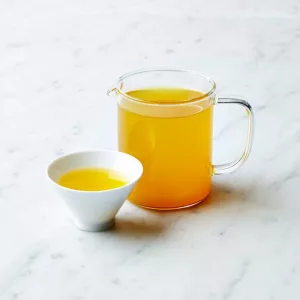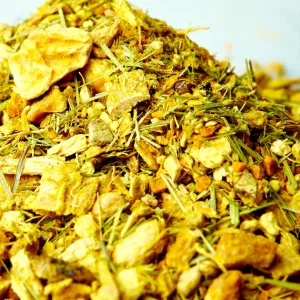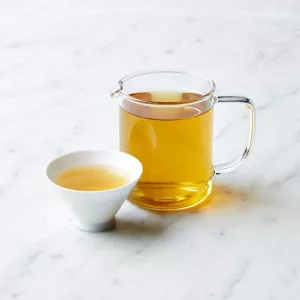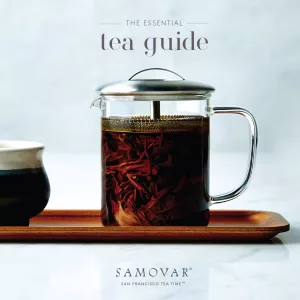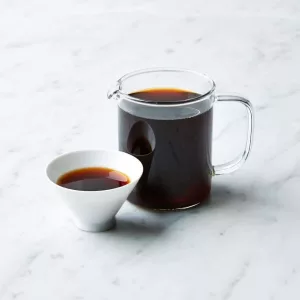 Tea is Hot
Tea is Hot
By Susan Steade
Mercury News
Posted: 03/10/2009 05:00:00 PM PDT
For a long time, it was listed on menus just by color. Then, suddenly, there were tastings and classes, talk of varietals, origin, terroir. Like wine 20 years ago, tea has become the drink to know.
 Any beverage that’s been around for 3,000 years can hardly be called an overnight success. But even those who have been in the tea business for decades acknowledge a recent spurt of interest.
Any beverage that’s been around for 3,000 years can hardly be called an overnight success. But even those who have been in the tea business for decades acknowledge a recent spurt of interest.
The reason? Part of it is a perception that tea has health benefits, particularly when compared with coffee. Part is a desire to be soothed in rocky times. And part of it is an appreciation of the increasing quality and variety of hand-crafted teas — what Gary Shinner of Marin County’s Mighty Leaf Tea calls “an upgrade in sensory experience.”
Jesse Jacobs, who last week opened his third Samovar Tea Lounge in San Francisco, cites the farmers market effect: an interest in seasonal, artisanal products from family growers. “The quality of the tea we’re getting now is unprecedented. Partly, that’s because we’re getting it faster, so it’s fresher. But the new demand is also making it possible for a farmer to produce and sell some wonderful teas in small quantities.”
Descriptions of these high-end teas read like a rhapsody on a Bordeaux: thundering, nutty, silky, hauntingly ambrosial, “warm apricot marmalade on toasted English muffin.” It’s a lot like wine, Jacobs agrees — “except, with tea, you can always have one more for the road.”
So how does a tea novice — a two-latte-a-day die-hard, for instance — enter this world? With a glossary, a few caveats and some encouragement.
What’s the best way to find the right tea?
“Sample two or three from each category,” Shinner advises. “Explore as you would with wine. What are the flavors you appreciate?” Jason Simpson, director of coffee and tea education for Starbucks, elaborates: Consider acidity, body, flavor.
For a coffee lover, the first step might be something like Yunnan, a black tea — robust, with a slightly roasted undertone — that takes milk and sugar well.
Don’t rely on the name of the tea, as that can be misleading, cautions Eliot Jordan, director of tea for Peet’s Coffee & Tea. “There are no conventions in naming, and you get a lot of creativity. Is this jasmine tea the traditional green tea, or is it a black tea, or an herbal, or is Jasmine just the name of their dog?”
So taste, first, across the four categories of tea. (Some say five; we’ll deal with that later.) All come from the same plant, the tree Camellia sinensis; the difference is in the processing.
At the center of the tea world are black and green, Jordan says. Black is the thicker, darker brew that took hold in countries that use dairy in cuisine, like India and England. Green is the standard in areas with less dairy tradition — Japan, China, North Africa. Oolong covers the wide range of spectrum between those two, and white is a lightly processed variety that 10 years ago was barely known in the West.
How they’re processed:
White. Leaves are picked, sometimes lightly steamed, and then dried, and that’s it. Simpson describes it as vegetal, grassy.
Green. Withered, then steamed (for more delicate, herbal flavors) or pan-fired (for a heartier, aromatic quality) before drying.
Black. Withered, then rolled — which breaks open the leaves and allows oxidation — and, finally, dried to stop the oxidation.
Oolong. Also withered and rolled but not fully oxidized. The oxidation is sometimes stopped and started more than once, as a lot of change can occur in just an hour. With a smooth, aromatic character, it’s a favorite of many tea professionals, Jordan says, and it’s hard to find a good, inexpensive one because of the work involved in crafting it.
The sometimes-fifth type is pu-ehr, an aged tea often sold in compressed cakes. A secondary fermentation gives it a very dark, earthy quality. In China, where our black tea is called red, pu-ehr is known as black.
Wait, what about herbal?
Tea has to be from Camellia sinensis. Any other infusion is technically a tisane (“ti-ZAN”).
Loose tea good, tea bags bad?
Not necessarily. There are good-quality teas in bags, especially with the recent advent of whole-leaf tea bags, which let the leaves expand and the water flow through. With the loose tea, though, you pay less for packaging, and you get the experience of the tea-making ritual.
The most flavorful teas are whole-leaf, which, though they shrivel when dried, will unfurl in hot water. Large broken pieces aren’t bad; what you want to avoid is finely crushed leaves and dust. Also, tea’s flavor fades as it ages, so consider how likely it is to be fresh. (Pu-ehr aside, of course.)
Where can I learn more?
Besides the thousands of tea aficionado Web sites? The Bay Area is a hotbed of tea stores and tea lounges; some offer classes, among them Tea Time in Palo Alto (www.tea-time.com, (650) 328-2877). Other South Bay tea rooms include Lisa’s Tea Treasures in Campbell and Menlo Park, Ku Day Ta in Milpitas’ Great Mall and Puripan Tea Garden in Santana Row.
Samovar, which has three locations in San Francisco, is adding more educational pages to its Web site, www.samovartea.com; Lupicia, a tea store in Valley Fair, is another good source.
Media Contact: Jesse Cutler, Samovar: (415) 655-3431 / publicity@jpcutlermedia.com

